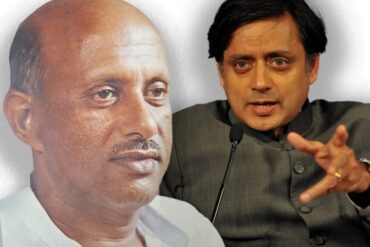Four months from now, the financial year 2019-20 will come to an end. Eight months have already passed, with such a fall in the GDP growth rate—slowdown in the Indian economy cannot be reversed in the near future. The country cannot realize the budgeted GDP growth rate for this year.
The fall in the GDP growth rate has touched a new low at 4.5 per cent in the second quarter as against 5 per cent in the first. It is the worst growth figure after 2012-13, the base year for the new series of the data. The average growth rate in the first six month is thus merely 4.75 per cent, and then in the last two months, the economic and financial crises have signalled a further decline.
The slowdown has created a huge shortfall in the budgeted estimates of the current financial year. The GDP for the year 2019-20 was projected 2,11,00,607 crore assuming 12 per cent (nominal) growth over the estimated GDP of 1,88,40,731 crore for 2018-19. At the average growth rate of 4.75 per cent, that we have been able to achieve in the first half of the current financial year, the likely shortfall at the end of this year is quite disturbing. How precarious the situation is can be imagined by the fact that the RBI’s transfer of funds to the tune of 1.76 lakh crore to the government of India was 1.25 per cent of GDP in 2018-19.
The government expects to get about only one lakh crore from distress sales, which the Ministry of Finance has termed as strategic sale, of public assets in form of disinvestment. Thus, the Indian economy has clearly come to a crossroad. It seems, there are only two options before the government: First, to borrow a very large amount of money from domestic and international lenders, and second, to sell national public assets. The only saving grace available to the government is the strong economic fundamentals of our country created by the former governments.
The present slowdown in the economy has been attributed chiefly to a fall in domestic consumption and demand. It fell because there is a shortfall of money with the people, which in turn is the result of joblessness, which is at a 45-year high. It is an accumulating effect of several factors such as investment, particularly private investment, which is at a 14-year low, industrial production growth slipping to a new low at only 2 per cent as per the data came out in August, GVA growth rate in agriculture and allied activities falling to 2.92 per cent, and so on. The list is long and most of the items present a distressing picture. All these are of the making of this government, which relied on Modi’s exaggerated sense of self-importance, whose economic measures either went wrong.
Moreover, the mismanagement of the economy and finance has created a financial mess which is characterized in the corruption in bank transactions leading to unprecedented financial crisis. Investors’ confidence has almost shattered. Thousands of industrial units have to be shut down, others are struggling for survival, rendering crores of workers jobless, and creation of new jobs are too little to have any impact on household earnings. With an absolute majority in Lok Sabha and low global oil prices, the government had a once-in-a-generation economic opportunity, which the Modi government has squandered.
The GDP numbers were released along with the data for the eight core infrastructure industries, which showed output declining by 5.8 per cent in October. As many as six of the eight core industries saw a contraction in output in October. Coal was the worst hit, declining steeply by 17.6 per cent. Among the sectors that took a hit this quarter is also the manufacturing industry that witnessed negative growth in the second quarter as the sector grew at minus 1 per cent. The slowdown has also taken away from India the tag of world’s fastest growing major economy to China.
The more worrisome factors are slowdown in private consumption, investment, and export. The short supply of money, lack of credit to the producers to produce goods due to the banking crisis, and lack of demand in the domestic market has created a condition in which companies are forced to lower their production. No industry is working at their full capacity. Both production and sales are under pressure, and public spending is running out of room due to poor tax collection.
Modi government has undertaken a slew of reforms in recent months to reverse the slowdown, which included steps to improve credit in the market focusing on offering incentives to banks to increase lending, several measures of tax reduction to corporates, super-rich surcharge imposed on foreign investors being withdrawn, exemptions granted for start-ups from angel tax, infusion of Rs 70,000 crore in public sector banks, setting up a special real estate fund, merging several public sector banks, announcing the biggest privatization drive in more than a decade et al. Even RBI has slashed lending rates of banks five times this year. However, all of it proved inadequate to handle the crisis.
Experts and analysts are of the view that the government did not do enough to address the issue of slowdown in domestic demand which is displaying chronic weakness. The demand is on the decline since there is not enough money with the people. Situation in the rural areas are becoming worse, pushing more people under the poverty line.
Even the Union Finance Minister Nirmala Sitharaman has ruled out revival of economy any time soon while asserting that the government is doing everything possible. She has assured the country while admitting the slowdown that country will not fall into recession. But who will believe her?







